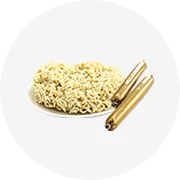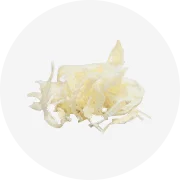


















Dive into the depths of culinary innovation with the ocean's own versatile treasure: live squid. As the appetite for unique and sustainable seafood grows, the culinary world turns its gaze to the remarkable cephalopods. These creatures, not only rich in proteins and omega-3 fatty acids but also in culinary potential, are making waves in kitchens worldwide. From the traditional frying pan to the avant-garde gastronomic laboratory, live squid offers a canvas for chefs to craft dishes that are as nutritious as they are delicious. This guide will navigate you through the intricacies of selecting, preparing, and cooking live squid, ensuring that your next seafood dish is a testament to both your culinary skills and your commitment to sustainability.
Cephalopods, and in particular the Coleoidea subclass which includes squid, have been integral to global cuisines for centuries. Their culinary versatility is evident in the myriad of preparation methods such as boiling, steaming, frying, grilling, and marinating, showcasing their widespread appeal. The nutritional value of cephalopods, rich in proteins, minerals, omega-3 fatty acids, and micronutrients, combined with their low fat content, makes them a sought-after ingredient in health-conscious diets. The increasing interest from chefs and gastroscientists in sourcing local and sustainable seafood has highlighted the potential of cephalopods as a key culinary component. This burgeoning trend is not only a response to overfishing concerns but also a pursuit for new and sustainable protein sources. The focus on the unique texture and flavor profiles of cephalopods, enhanced through various cooking transformations, positions them as a promising option for future gastronomic innovation.
Our platform offers a diverse range of squid products to meet the varied needs of culinary enthusiasts and professionals. Among the offerings, you can find frozen giant squid necks, which are cleaned and prepared for convenience. Whole round squids are also available, offering a complete experience for those who prefer to prepare their seafood from a more natural state. For a quick and tasty option, there are frozen squid rings with skin, sized between 3-7cm, ideal for frying or adding to seafood dishes.
The selection extends to specialized products such as squid tubes, which are a staple in many seafood recipes, and can be found alongside whole squids for those seeking variety. For those who favor dried seafood, there are dried squid options, which can be used in a range of dishes, from snacks to complex recipes. The platform also caters to different regional tastes with black squid and red squid varieties, including the sought-after Loligo type, known for its tender texture and flavor.
In addition to the prepared seafood, our platform also features related products such as micro spoon fishing lures, which are used to catch squids and other small fish. While these are not edible products, they are indicative of the comprehensive range of items related to squid fishing and cuisine that one can source from the platform. This variety ensures that buyers can select products that not only meet their culinary requirements but also their preferences for preparation and presentation.
Selecting the best live squid for your culinary endeavors involves a keen eye for detail and an understanding of quality indicators. Freshness is paramount when it comes to live squid, and there are several factors to consider. Firstly, the clarity of the squid's eyes is a primary indicator of freshness; clear eyes suggest a recently caught squid, whereas opaque ones may indicate an older catch. Secondly, the condition of the tentacles can also be telling; fresh squid have firm tentacles that are full and adhere closely to the body.
When choosing specific types of squid, such as the Bigfin reef squid, look for individuals that are robust, with thick, firm flesh and a hard skin. The membrane surrounding the body should be intact, without any discoloration or damage. For cuttlefish, a type of squid, ensure that the meat is thick and the grip is firm, with an unbroken outer coating signaling freshness. Standard squid should have a bright pink hue, with the head firmly attached to the body, and the ink sac intact. By paying attention to these details, you can ensure that you select the freshest live squid for your dishes.
The journey of live squid from the ocean to the kitchen involves meticulous sustainable practices. Squid populations, referred to as 'stocks', are carefully managed to ensure their continued reproduction and minimal environmental impact. Certified sustainable squid, identifiable by eco-labels, guarantees that the squid comes from fisheries that are well-managed and monitored. This is crucial for species like the Shortfin Squid (Illex illecebrosus), which are particularly susceptible to climate change due to their rapid growth and short lifespans. The Longfin Inshore Squid (Doryteuthis (Amerigo) pealeii), known for their distinctive long fins and larger size, are also sourced with sustainability in mind. These squids are part of a controlled fishery that spans from North Carolina to Southern Massachusetts, where they are known to migrate vertically, contributing to the dynamic ecosystem of the ocean floor and surface waters.
When selecting live squid for culinary use, certain features are indicative of their freshness and quality. Look for squid with flesh that is white and slightly translucent when raw, which darkens to a pink tinge, signaling it was recently caught. The skin should be intact, with the characteristic iridescence in squid and cuttlefish, although some tears or broken arms may be present without affecting the quality. It's important to note that ink presence is not a sign of poor quality, but it should be washed off to prevent bacterial growth.
The texture of the squid is another crucial aspect. The flesh should be elastic and very firm, not slimy. Any loss of elasticity or presence of a soft, slimy, or gritty texture can indicate poor handling or quality. Squid can become tough if cooked incorrectly, so a firm yet tender texture is key. Additionally, while octopus is naturally firmer than squid and cuttlefish, it should not be excessively tough. These sensory criteria are essential when choosing live squid to ensure the best culinary experience.
Cooking squid to perfection is an art that balances texture and flavor. The key is to cook it quickly over high heat or slowly with gentle simmering. Quick methods include char-grilling or sautéing in olive oil, which turns the squid opaque white, signaling it's done. Alternatively, slow-cooking techniques, popular in Mediterranean cuisines, involve braising the squid with aromatics like shallots and garlic, then simmering it in stock, wine, or a tomato-based sauce for up to two hours until tender.
Preparation is just as crucial as the cooking process. It starts with cleaning the squid, followed by separating the body from the tentacles, and removing the internal quill, beak, and outer membrane. This meticulous preparation ensures the squid is ready to absorb the flavors of the accompanying ingredients, whether it's in a traditional bolognese or as a novel addition to salads and burgers.
For those seeking variety, squid can be enjoyed in many forms, from deep-fried calamari to stuffed squid. Chefs are increasingly incorporating squid into diverse recipes, enhancing dishes with its unique texture and subtle taste. Whether it's adding a twist to a potato salad or enriching a mackerel burger, squid offers a versatile flavor profile that complements a wide range of dishes.
Purchasing live squid through a platform like Alibaba offers a variety of benefits for culinary enthusiasts and professionals alike. The platform provides access to a diverse range of live squid options, catering to different culinary needs and preferences. Buyers can find an array of squid types, from the smaller-sized varieties perfect for individual servings to larger ones suitable for grander dishes. The availability of different squid types ensures that whether for a delicate sashimi dish or a hearty seafood stew, there is a suitable option available.
The convenience of sourcing live squid online allows chefs and home cooks to obtain fresh seafood directly from the ocean, ensuring the natural flavors and textures are preserved. This direct sourcing method not only maintains the quality of the squid but also supports freshness, which is paramount for dishes where squid is the star ingredient. Moreover, the selection includes squid that are easy to clean and prepare, streamlining the cooking process and allowing for a focus on creativity and flavor enhancement in the kitchen.
Alibaba's global reach connects buyers with suppliers from various regions, offering a glimpse into the international seafood market. This connection enables the exploration of different squid species, each with unique characteristics and culinary potentials. For those concerned with sustainability and ethical sourcing, the platform also provides information on the practices of suppliers, allowing informed decisions that align with personal or business values regarding seafood consumption.
Sustainable practices in squid fishing are paramount, considering the vulnerability of squid species to environmental changes, including climate impacts. Emphasizing that sustainability is not about the species but the stocks, with certain fisheries being certified. Squid endorsed with a certification guarantees that the squid populations are maintained for continuous reproduction, harvested with minimal environmental impact, and managed responsibly. This certification ensures that any shifts in population or environmental conditions are closely monitored and addressed. Such sustainable management is crucial, especially for species like the Shortfin Squid, which have rapid growth rates but short lifespans, making them particularly sensitive to ecological disturbances.
In the context of Alibaba, selecting live squid that adheres to these sustainable and ethical fishing practices not only supports the environment but also ensures the quality of the product. When considering live squid for culinary purposes, it is essential to look for suppliers that align with these responsible fishing methods. This approach helps in maintaining the delicate balance of marine ecosystems while providing consumers with a product that is both ethical and of high standard.
In the realm of seafood, live squid emerges as a paragon of culinary versatility and environmental consciousness. Through this guide, we've explored the importance of selecting the freshest squid, understanding the journey from ocean to kitchen, and the significance of sustainable fishing practices. Alibaba stands as a beacon for sourcing diverse and quality squid, connecting the global market to your local kitchen. By choosing live squid that aligns with ethical fishing methods, chefs and food enthusiasts not only contribute to the health of our oceans but also indulge in the peak freshness that elevates their culinary creations. As we close this guide, remember that each choice we make in the kitchen has the power to impact our health, our palate, and our planet. So, let's choose wisely, cook passionately, and dine sustainably.